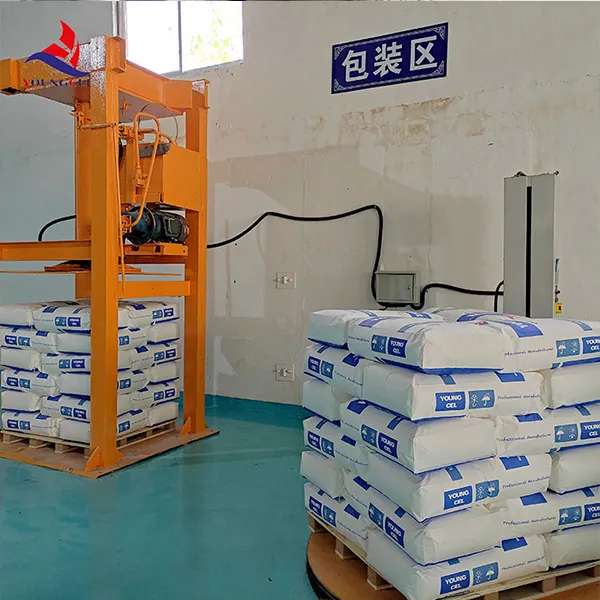The Role of HPMC Detergent in Modern Cleaning Solutions
In the age of advanced cleaning technologies and sustainable practices, the role of various surfactants in detergents has become increasingly critical. One such compound gaining attention in the industry is Hydroxypropyl Methylcellulose (HPMC), a cellulose derivative that plays a vital role in formulating effective detergents. HPMC not only serves as a thickening agent but also enhances the performance of cleaning products, making it a valuable addition to modern cleaning solutions.
What is HPMC?
HPMC is a non-ionic, water-soluble polymer derived from natural cellulose. Its chemical structure allows it to dissolve easily in both hot and cold water, forming a gel-like solution. This property makes HPMC an excellent thickening agent. Furthermore, its compatibility with various ingredients in cleaning formulations allows it to improve the viscosity, stability, and overall performance of detergents.
Benefits of HPMC in Detergents
1. Enhanced Thickening Properties One of the primary functions of HPMC in detergents is to provide the desired viscosity. A properly thickened detergent not only offers a more luxurious feel but also helps in the effective distribution of the product during use. It ensures that the detergent adheres to surfaces longer, allowing it to work more efficiently on tough stains and grime.
hpmc detergente

2. Improved Stability HPMC contributes to the stability of cleaning formulations. It helps prevent the separation of ingredients, which is crucial for maintaining the effectiveness of the product over its shelf life. Stable formulations reduce the need for additional stabilizers, which can sometimes be harmful to the environment.
3. Eco-Friendly Alternative In a world increasingly concerned with environmental sustainability, HPMC stands out as a biodegradable option. Its natural origin and ability to break down in the environment make it an appealing choice for environmentally conscious brands and consumers. Incorporating HPMC into cleaning products aligns with the trend of reducing harmful chemical usage and promoting sustainable alternatives.
4. Versatile Applications HPMC's versatility makes it suitable for a wide range of cleaning products, including laundry detergents, dishwashing liquids, and surface cleaners. Its ability to function effectively in both liquid and powder formulations expands its applicability in the cleaning industry.
5. Improved User Experience The inclusion of HPMC in cleaning products enhances the overall user experience. Its thickening properties provide a better application experience, allowing users to control the amount of product dispensed. Additionally, HPMC helps in reducing splatter during use, making cleaning tasks more manageable and enjoyable.
Conclusion
The incorporation of Hydroxypropyl Methylcellulose in detergent formulations represents a significant advancement in the cleaning industry. With its thickening abilities, stability enhancement, eco-friendliness, and versatility, HPMC is revolutionizing how we approach cleaning products. As consumer demand continues to grow for effective yet environmentally responsible solutions, HPMC will likely play an increasingly pivotal role in shaping the future of detergents. Embracing such innovations not only addresses cleaning efficiency but also aligns with the broader objectives of sustainability and responsible consumerism. As we look to the future, the presence of compounds like HPMC in our cleaning products will undoubtedly contribute to a cleaner, greener world.
-
Rdp Powder: Key Considerations for Wholesalers in the Building Materials IndustryNewsJul.08,2025
-
Key Considerations for Wholesalers: Navigating the World of Hpmc - Based ProductsNewsJul.08,2025
-
Hpmc Detergent: Key Considerations for WholesalersNewsJul.08,2025
-
Key Considerations for Wholesalers: China Hpmc For Tile Adhesive, Coating Additives, Concrete Additives, and MoreNewsJul.08,2025
-
Crucial Considerations for Wholesalers: Navigating the World of Construction MaterialsNewsJul.08,2025
-
Key Considerations for Wholesalers Sourcing Additive For Cement, Additive For Concrete, Additive For Putty from Additive Manufacturer Shijiazhuang Gaocheng District Yongfeng Cellulose Co., Ltd.NewsJul.08,2025




